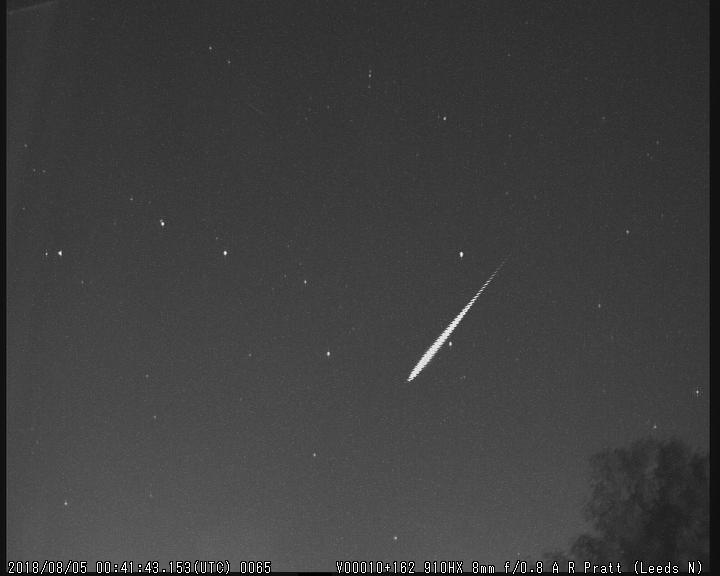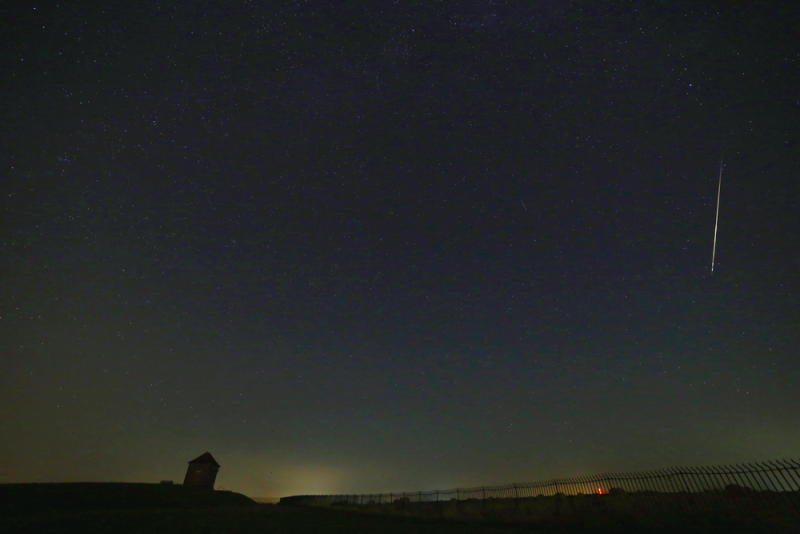2018 August 8
Meteor observers wanted – no experience necessary!
METEOR OBSERVERS WANTED: NO EXPERIENCE NECESSARY!

Many people may be intending to go out and observe the Perseids this coming weekend, but they may not be planning to collect any data. This is a shame because meteor observing requires the minimum of equipment and even newcomers can obtain results of value. So why not give it a try this weekend?
With maximum expected early on Monday, August 13, the period from Friday evening through to the pre-dawn hours of Tuesday morning is likely to yield the best observed rates.
OBSERVING METEORS VISUALLY
First find a dark site away from town lights, and recline on a deckchair or sun-lounger so you can comfortably look at the sky. All you need is an accurate watch or clock, a dim red torch and something to record information with – either a notepad or a digital voice recorder. Warm clothing is essential; it can be quite chilly even on August nights!
Then just watch. It doesn’t matter what direction you look, but do make a note of the sky conditions in terms of the amount of cloud and the stellar limiting magnitude if you can estimate this. Write down the date and time you started observing and whether you are using BST or UT, to avoid confusion later.
When you see a meteor, note down the time and what kind of meteor it was. Was it a Perseid or a sporadic meteor? You can work that out by tracking the path of the meteor back to see if it came from the shower radiant. Meteor watches should ideally be of an hour’s duration or longer (in multiples of 30 minutes). Then have a break and start again.
Note the start and end times for each new watch, making sure it’s clear what the date is when it changes at midnight.
You can also work in a group, such as with other members of your local astronomical society. Set yourselves up so you’re all covering a different piece of sky and record your observations as individuals. The Meteor Section welcomes reports from such groups as well as individual observers. Please send them to: meteor@britastro.org.
In its simplest form, a list of times and meteors seen (Perseids or sporadics) in each watch, with details of the observer’s location and the date and time of each watch can be of value. The BAA’s visual meteor report forms, available as downloads in both pdf and Excel formats from https://www.britastro.org/node/4944, may be used to record the details of each meteor seen.
More experienced observers may attempt to measure the brightness of the meteors by comparing them with nearby stars. You might also note if the meteor flared or fragmented in flight, or had an obvious colour, or if you saw a persistent train and how long it lasted (the Perseids are rich in persistent trains).
IMAGING METEORS WITH A DSLR

The Perseids are well known for the abundance of bright, swift meteors in the five-day interval centred on the maximum. This makes them an excellent target for digital imaging, particularly given the lack of interference from moonlight this year.
With a tripod-mounted camera, lens (usually a wide-angle) at full aperture (f/2.8 or similar) and a high ISO setting, one hopes that a bright meteor will flash through the field of view while the shutter is open. DSLR cameras are very efficient at collecting background light from the sky, particularly at a setting of ISO 1600 or 3200, so exposures should be kept short – no more than 30 seconds’ duration in a really dark, rural location, and probably only 10 to 15 seconds from a more typical observing site. Such short exposure times also aid the identification of aircraft and satellite trails which may sometimes be confused with those of meteors. A meteor trail will usually appear on only one frame; a satellite or aircraft trail may overlap several consecutive frames.
Such a camera set-up, under good sky conditions, can capture meteors of magnitude 1 and brighter. Ideal aiming directions are about 30-40 degrees to either side of the radiant at 50 degrees altitude above the horizon – Cygnus in the early evening, the Square of Pegasus later in the night, or towards the north celestial pole, for best results.
With some DSLRs, the camera can be operated in ‘continuous’ mode or using a programmable timer attached to the shutter control to take repeated exposures one after the other for as long as required, provided the battery is fully-charged beforehand. Ideally, run the camera for an hour or longer in ‘continuous’ mode making a note of the start and end times of each run. Beware of dew forming on the lens front element, even in the summer. Later, check the frames carefully for meteor trails and compile a list of the times of any trails recorded and whether they were of a Perseid or member of a minor shower/sporadic.
Please remember to accurately set the clock on your camera to UT, so it is possible to link meteor trails captured from different observing sites, and do send a summary of your results to meteor@britastro.org.
Happy meteor hunting!
Doctor John Mason
Director, BAA Meteor Section
8th August 2018
[Thumbnail image from Alex Pratt showing traingulation of meteors from various video meteor camera stations]
| The British Astronomical Association supports amateur astronomers around the UK and the rest of the world. Find out more about the BAA or join us. |
